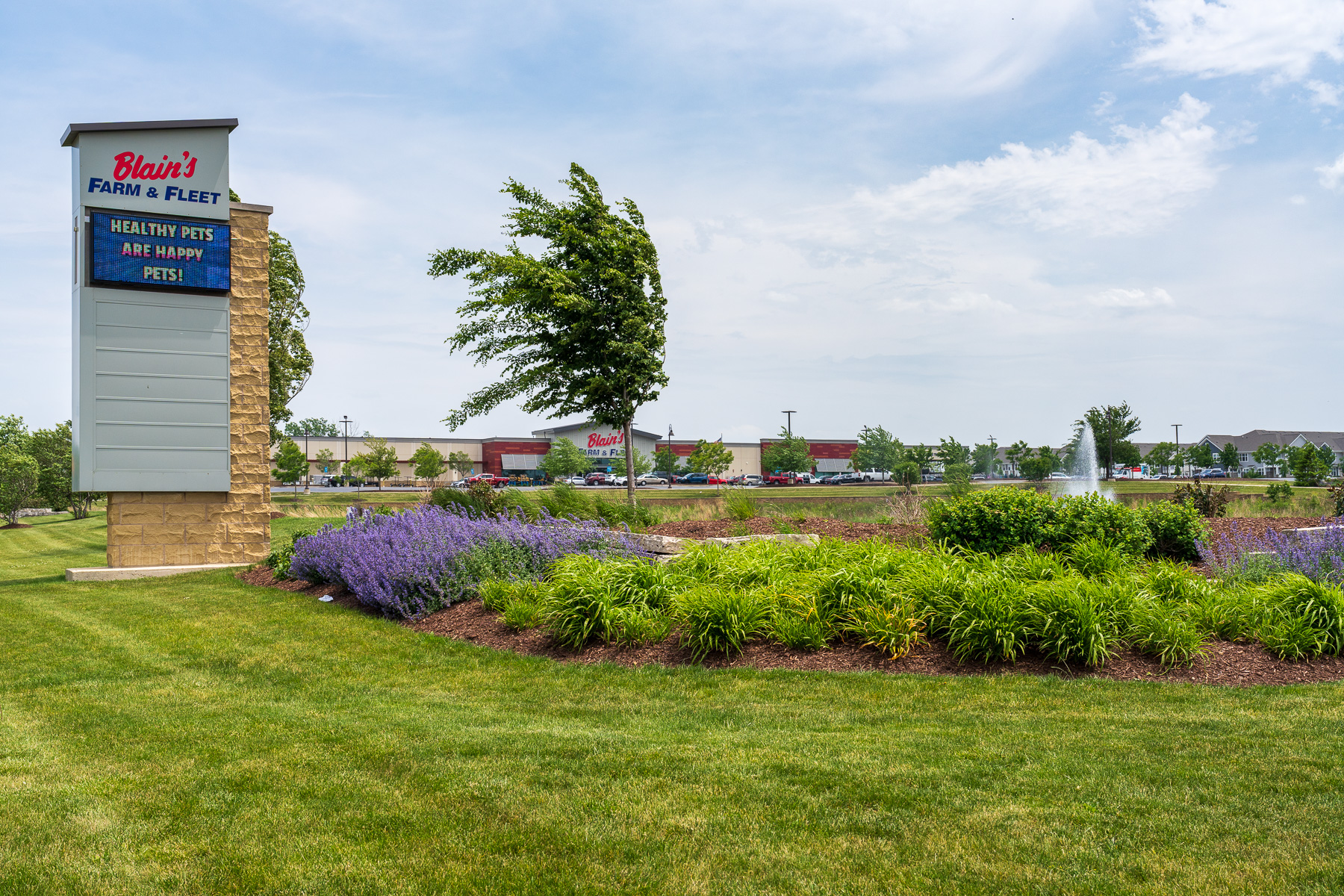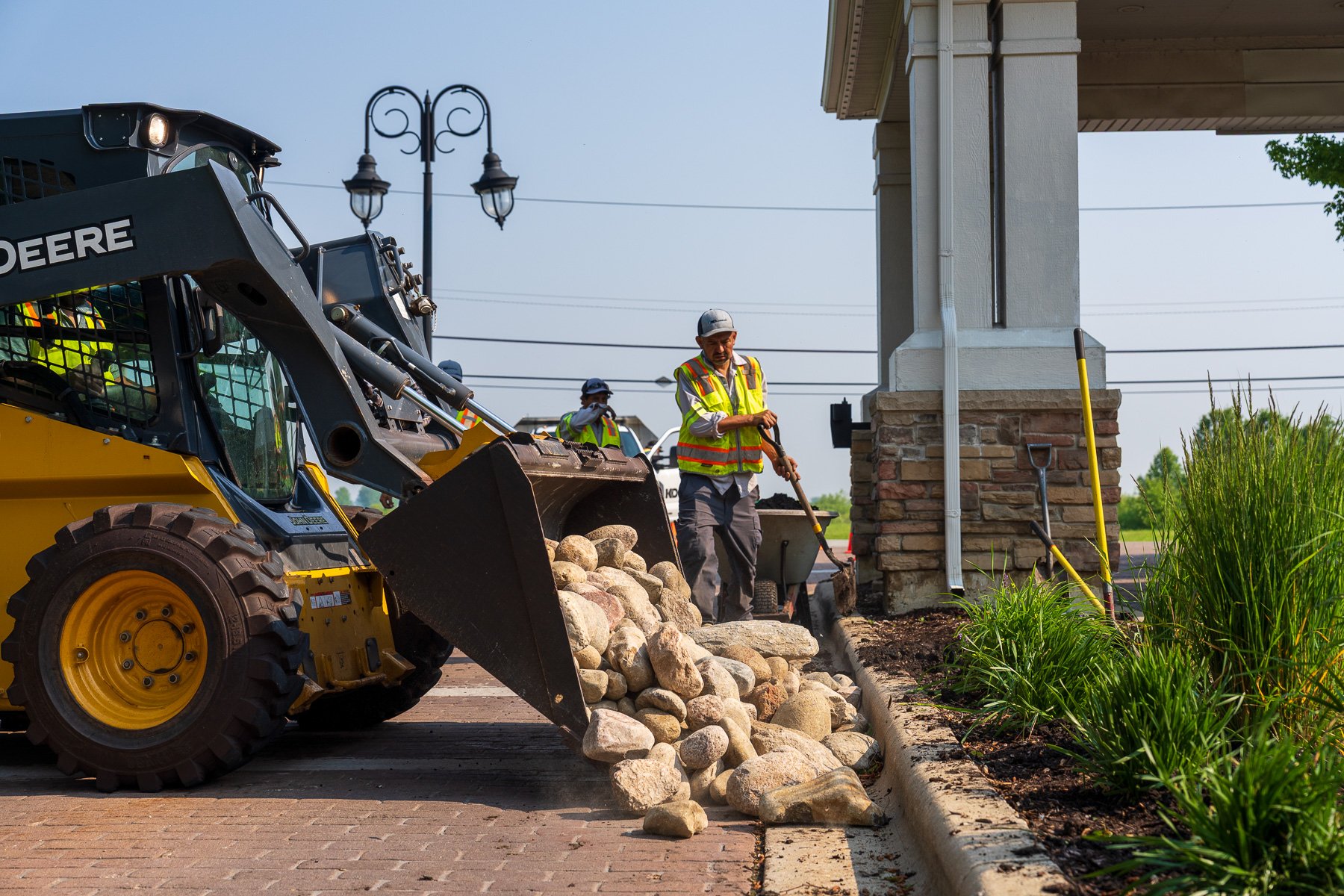When you have a commercial property with wetland zones and waterways, maintaining these areas can be complicated.
Not only are there an array of rules and regulations that often need to be followed, but you may not be sure of the best way to manage these sites. There are critical factors that must be identified to maintain the property's integrity.
Managing these areas properly is imperative not only to protect your infrastructure but also the functionality and aesthetics of your commercial property.
Jump to Section
- What’s Involved in Waterway Management?
- Finding A Partner in Waterway Management
- Choosing A Commercial Landscaper in Greater Chicago
Partnering with a commercial landscape company that has experience with services like waterway management can make life easier. Often, these situations arise when new construction seeks to integrate its development into an existing wildlife habitat.
Finding the right partner will be key.
In this article, we’ll discuss what’s involved in waterway management and what you should look for in a commercial landscape provider who can tackle this type of work. Your wise choices will go a long way in giving you peace of mind.
Waterway management will look different for each property. The exact needs of any given site are particular to that client and the type of waterway or wetland area they have.
Several common tasks are often part of caring for waterways and wetlands.
Algaecide Applications
For one, the application of algaecides is used to mitigate the growth of algae in aquatic environments. This helps to maintain the ecological balance and also the aesthetic value of the waterway. It also helps to improve water quality.
While not all algal blooms are harmful, they can cause scum, water discoloration, and other problems, including clogging waterways. Effective chemical management of the watercourse can help address these issues.
Waterway Vegetation Management
Aside from chemical applications, other waterway vegetation management tasks include cutting down and removing invasive species. Often, this involves controlling growth, such as cattails, thistles, and phragmites.

Certain invasive species tend to thrive in wet environments. But these can cause long-term damage to the ecosystem and even lead to infrastructure damage and flooding.
Invasive species also prevent natural, healthy species from growing.
Waterway vegetation management typically involves a multifaceted approach, including mechanical methods (such as mowing, weed whacking, and cutting), specialized herbicide applications, and, in some cases, the use of specialized equipment. Every situation is approached with a customized solution.
Shoreline Stabilization
In addition to managing invasive species along the shoreline, we might also need to address shoreline degradation. We can stabilize a degrading shoreline with stone.
Specifically, we use riprap (a layer of large angular stones designed to dissipate the energy of waves and currents) to prevent further erosion.
Unrestricting Waterways
Another component of waterway management can involve unrestricting waterways from blockages, including those formed by beaver dams. This is a highly specialized need, but it does come up on some properties.
The beaver can be a highly invasive animal in natural waterways, and their dams can lead to problems for the site, including flooding and drainage problems. Beavers also tend to cause damage to local trees and landscape with gnawing and burrowing. Even their dam-building process can damage landscaping.
We work closely with a trapper to safely trap the beavers and relocate them to a more suitable habitat. We can then remove dams and re-establish a clean waterway.
Finding A Partner in Waterway Management
Waterway management is a niche offering, and many commercial landscape companies will not be equipped to assist. Many probably don’t even offer it.
Therefore, it’s essential to select a commercial provider that has experience in this type of work and understands the associated requirements.
Most importantly, since waterway management can be heavily regulated, you must ensure that you’re taking all the proper steps.
/account%20manager%20and%20operations%20manager%20reviewing%20work%20at%20office%20in%20morning.jpg?width=1620&height=1080&name=account%20manager%20and%20operations%20manager%20reviewing%20work%20at%20office%20in%20morning.jpg)
At KD Landscape, we work closely with the U.S. Army Corps of Engineers (USACE), which is responsible for regulating waterways, as well as the U.S. Environmental Protection Agency (EPA). We recognize that it’s essential to consult with these governing bodies before developing a water management plan. They provide us with reports on what areas require monitoring and what services need to be prioritized.
We understand the importance of ensuring that any waterways on your property are properly managed.
Choosing A Commercial Landscaper in Greater Chicago
If you are seeking a commercial landscaping company to help you manage a waterway as part of total property care, take the time to do your research, ask questions, and ensure you’re making an informed choice. Any company you’re considering must be adequately equipped for this type of work, as it is a specialty.
At KD Landscape, we’re here to be your commercial landscape maintenance partners.
We can manage your property as a whole, including any waterway areas you may have.

Once you make your choice in landscaping companies, we want to help ensure that both your experience and your results meet your high standards. We understand that incorporating a water feature into your property can seem complicated, but we’re here to help you simplify the process.
In the end, that should provide you with peace of mind that your property is in good hands.
Want to learn more about KD Landscape’s commercial landscape maintenance in Chicagoland? Get started today with an on-site consultation. We’ll review your options together so you can make a great choice.







